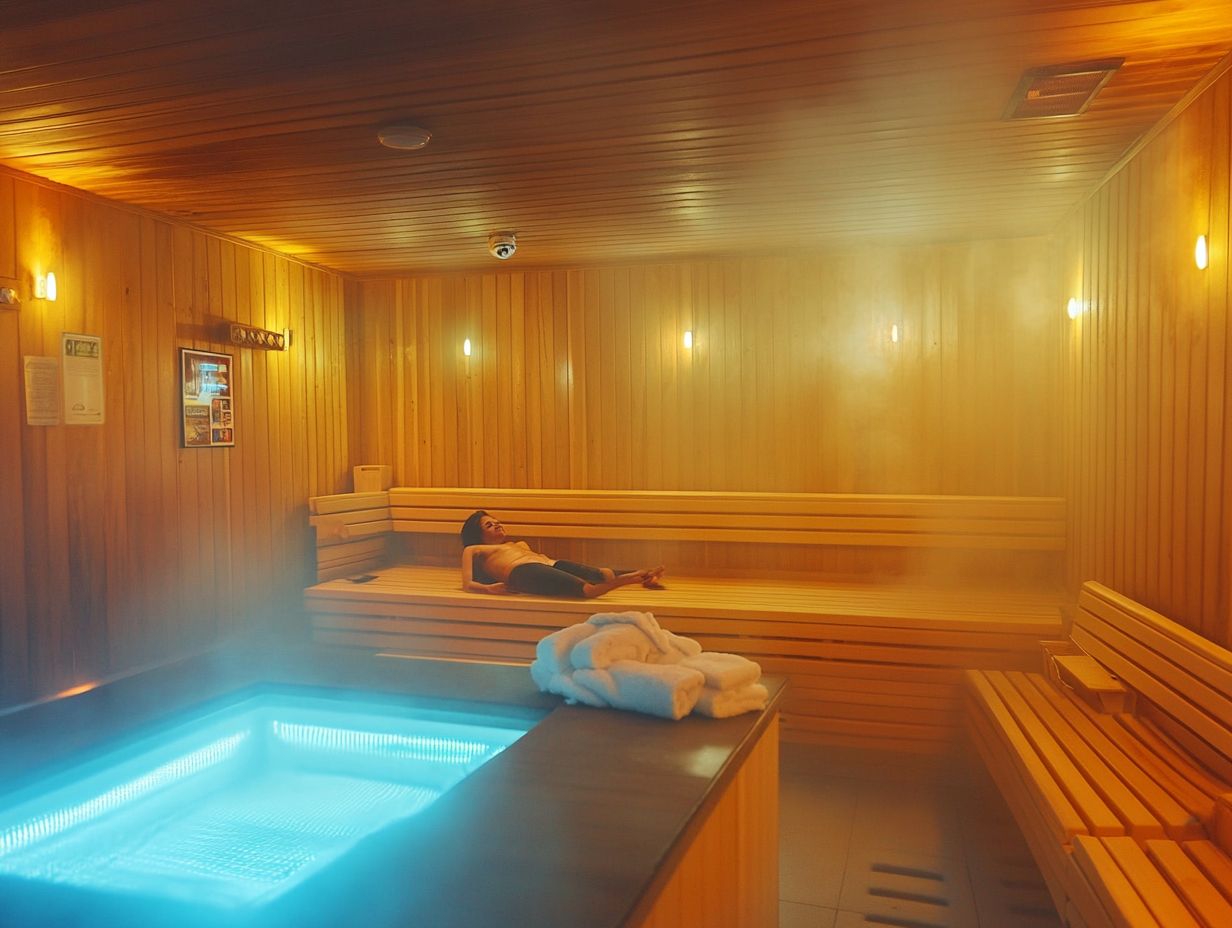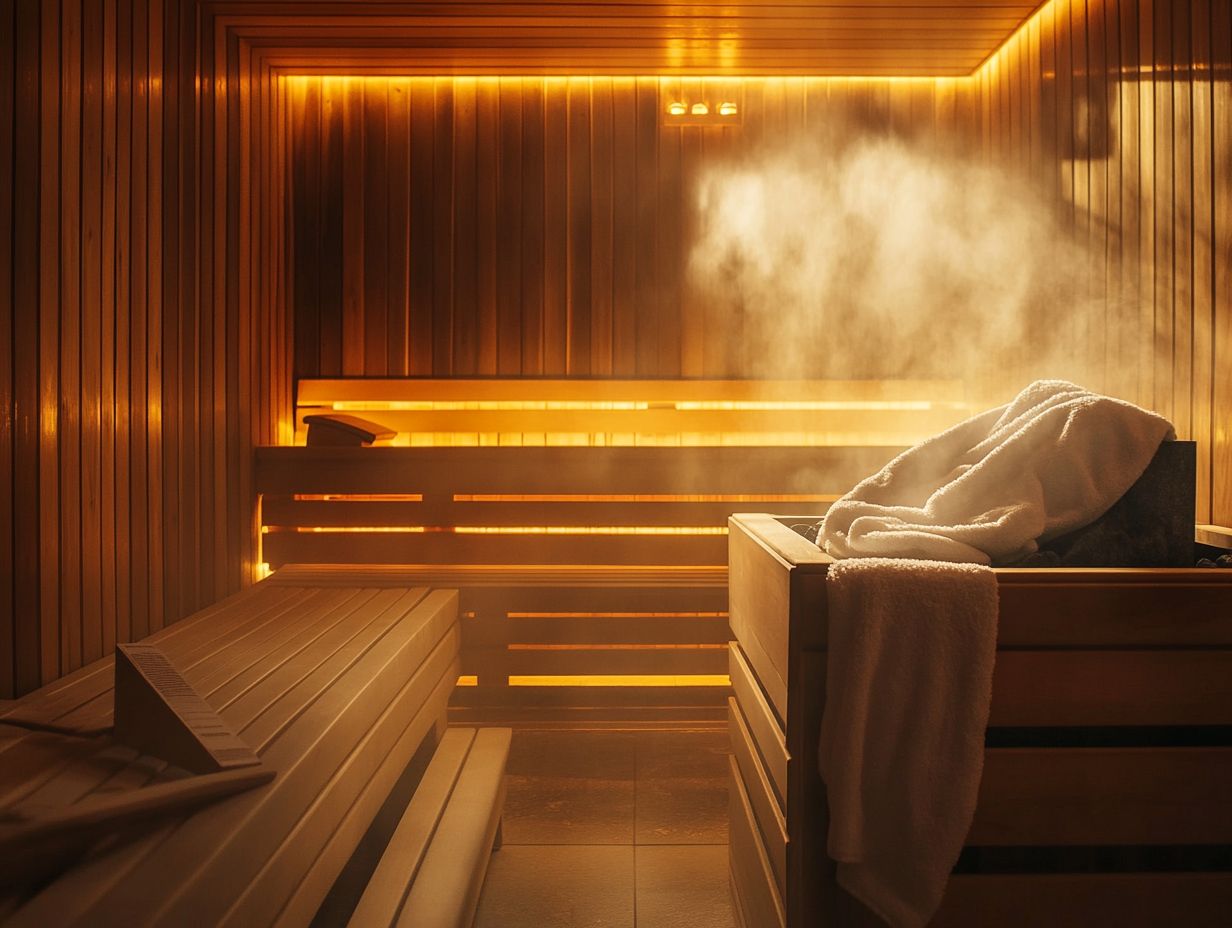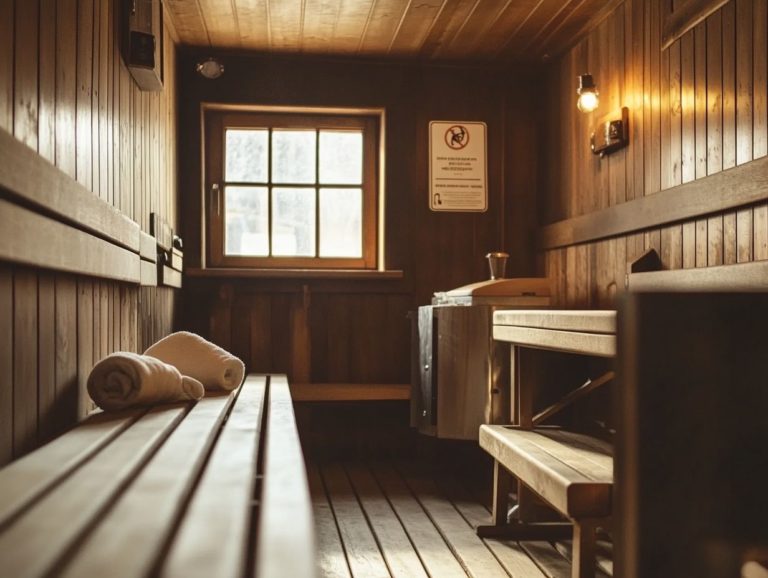Sauna Safety: The Link Between Comfort and Safety
Saunas provide a luxurious escape, offering you both relaxation and many health benefits.
From enhancing your physical wellness to elevating your mental clarity, the appeal of sauna use is undeniably captivating. However, it’s crucial to be aware of the potential risks and to implement essential safety measures to ensure a delightful experience.
This article delves into the benefits of sauna use, emphasizing important safety precautions, guiding you in selecting the ideal sauna, and outlining proper etiquette for maintaining a respectful environment.
Immerse yourself in this journey to discover how to enjoy the sauna safely and effectively!
Contents
- Key Takeaways:
- The Benefits of Sauna Use
- Potential Risks of Sauna Use
- Safety Measures and Precautions
- Choosing the Right Sauna
- Proper Sauna Etiquette
- Frequently Asked Questions
- What are the main factors to keep in mind for sauna safety?
- How should I prepare for a sauna session to ensure my safety?
- What are the potential risks of using a sauna without proper safety precautions?
- What should I do if I start feeling lightheaded or uncomfortable during a sauna session?
- Are there specific safety guidelines for using a sauna?
- Can children use saunas safely?
Key Takeaways:

- Proper sauna use can have numerous physical and mental health benefits, but it’s important to understand the potential risks and dangers involved.
- Following safety measures and precautions, along with choosing the right type of sauna with appropriate safety features, can help ensure a comfortable and safe sauna experience.
- Proper sauna etiquette, such as staying hydrated and not spending too much time in the sauna, is essential for maintaining a safe and enjoyable experience.
The Benefits of Sauna Use
Using saunas, whether traditional or infrared, offers a wealth of health benefits that can greatly enhance your physical and mental well-being. Regular sauna sessions boost your heart health by improving heart rate and blood pressure while also helping with removing toxins through the process of sweating.
These heat experiences provide stress relief, promote skin health, and aid in muscle recovery, making them a vital part of holistic wellness practices. In countries such as Finland, sauna culture is a treasured tradition, connecting relaxation to enhanced immune function and overall health a connection backed by studies published in esteemed journals like Mayo Clinic Proceedings.
Physical and Mental Health Benefits
The benefits of sauna bathing are nothing short of remarkable. Regular sauna sessions can significantly improve your overall health, including heart health and stress relief.
As your heart rate increases and blood circulation improves, sauna bathing becomes like a workout for your heart, making it an invaluable ally in your pursuit of cardiovascular wellness. Beyond the physical benefits, the experience grants you a moment of mental tranquility, allowing you to release daily stressors and achieve emotional balance.
The gentle warmth eases muscle tension, speeding recovery after intense workouts. Don’t forget the profuse sweating, which detoxifies your body while keeping you hydrated, ensuring your vitality remains intact. With regular sessions, you ll find a genuine uplift in both body and mind, contributing to a holistic sense of well-being.
Potential Risks of Sauna Use
While sauna use is generally safe for most people, it s essential to recognize the potential risks that come with prolonged exposure, especially for individuals with heart disease or respiratory issues. You should be mindful of issues like dehydration, heat exhaustion, and increased strain on the heart, particularly for those with asthma, hypertension, or even Alzheimer’s disease.
By understanding these risks, you can take the necessary precautions to fully enjoy the benefits of the sauna while minimizing any unwanted side effects.
Experience the benefits of sauna sessions for yourself!
Understanding the Dangers

Understanding the risks associated with sauna use requires you to recognize the potential dangers of heat exhaustion and dehydration, especially if you have cardiovascular disease or respiratory conditions.
These health issues can manifest in symptoms like excessive sweating, dizziness, confusion, and an increased heart rate critical indicators that warrant your attention.
Vulnerable individuals, such as the elderly, young children, and those with chronic illnesses, should exercise particular caution during sauna sessions.
Traditional saunas, known for their higher temperatures, present greater risks compared to infrared saunas, which provide a milder heat experience with less humidity.
If you have any pre-existing health concerns, consult with a healthcare professional before stepping into a sauna.
Staying well-hydrated, limiting your exposure time, and closely monitoring your comfort levels are vital steps to ensure your safety.
Safety Measures and Precautions
Take safety measures seriously! They can make your sauna experience safe and enjoyable.
Implementing safety measures and precautions is crucial for anyone using a sauna, ensuring that your experience remains beneficial without jeopardizing your health.
Proper hydration before and after your sauna session is essential. Drink plenty of water to replace the fluids lost through sweating.
By keeping a close eye on temperature and duration, you can prevent any heat-related issues.
Adhering to established guidelines not only enhances your overall safety but also makes your sauna experience more enjoyable.
Guidelines for Safe Sauna Use
Guidelines for safe sauna use highlight the importance of hydration, regulating session duration, and monitoring temperature.
You should prioritize staying well-hydrated before and after each session, as the high temperatures can lead to significant fluid loss through sweat.
Limit your sauna sessions to no longer than 15 to 20 minutes at a time, especially if you’re new to this practice or have underlying health conditions like fibromyalgia.
Maintaining a comfortable temperature range of 150 to 195 degrees Fahrenheit is crucial for maximizing the benefits while minimizing any potential risks.
If you have specific health concerns, such as cardiovascular issues or respiratory conditions that may trigger asthma or pneumonia symptoms, approach sauna use with caution.
Consulting a healthcare professional beforehand can help ensure that this relaxing ritual aligns seamlessly with your overall health needs and lifestyle.
Choosing the Right Sauna
Selecting the ideal sauna is vital for enhancing health benefits while mitigating potential risks.
It s important to grasp the distinctions between traditional and infrared saunas.
Traditional saunas use hot rocks and steam to create a warm environment.
In contrast, infrared saunas utilize infrared heaters, delivering deep tissue warmth at more moderate temperatures.
Each sauna type boasts its unique safety features and health advantages.
Evaluate your personal preferences and health requirements before making a choice.
If you have doubts about sauna use, consult your healthcare provider for guidance.
Types of Saunas and Safety Features

There are various sauna types available, each offering a unique experience and safety features consider traditional saunas versus infrared saunas.
Traditional saunas are typically made from wood and generate heat through wood burning or electric heaters. This creates a high-temperature, high-humidity setting that usually hovers between 150 and 195 degrees Fahrenheit. In contrast, infrared saunas use infrared light to warm your body directly. This allows for effective heat absorption at more moderate temperatures, around 120 to 140 degrees Fahrenheit, which can be beneficial for those with respiratory issues.
You ll likely enjoy the intense, steamy experience of traditional saunas, while infrared saunas often make breathing easier and allow for longer sessions. Safety is always a top concern, featuring automatic shut-off systems and precise temperature controls to enhance your experience. This ensures that comfort and safety work hand in hand in your quest for relaxation.
Proper Sauna Etiquette
Mastering proper sauna etiquette is essential for creating a respectful and enjoyable atmosphere for everyone. By familiarizing yourself with the do’s and don’ts of sauna use, you enhance your own experience and contribute to a positive environment for all. This is particularly important considering the stress and challenges related to cortisol levels that can arise during sauna use.
Embracing established social norms helps cultivate a sense of community. This ensures everyone can enjoy their time in the sauna without any social discomfort.
Do’s and Don’ts in the Sauna
- Do: Wear appropriate attire, such as a swimsuit or towel, and remember that some facilities may embrace nudity.
- Do: Shower before entering to maintain cleanliness.
- Do: Keep your voice low and respect personal space to foster a tranquil atmosphere.
- Don’t: Use strong fragrances that could overwhelm fellow sauna-goers.
These mindful practices not only enhance everyone s enjoyment but also amplify the health benefits of regular visits, such as improved circulation and detoxification.
Frequently Asked Questions
What are the main factors to keep in mind for sauna safety?

The main factors for sauna safety are temperature, hydration, and duration. It’s crucial to regulate the temperature, stay hydrated, and limit your time in the sauna to prevent potential risks or discomfort.
How should I prepare for a sauna session to ensure my safety?
To prepare for a sauna session, drink plenty of water beforehand and take a shower to clean your body. It s also wise to wear loose, comfortable clothing and remove any jewelry or accessories that may heat up and cause burns.
What are the potential risks of using a sauna without proper safety precautions?
Without proper safety measures, using a sauna can lead to dehydration, heat exhaustion, and burns. It may also pose risks for individuals with certain health conditions, such as heart problems or high blood pressure.
What should I do if I start feeling lightheaded or uncomfortable during a sauna session?
If you feel lightheaded or uncomfortable during a sauna session, exit the sauna immediately and cool down. Drink water and rest until you feel better before attempting to re-enter. If symptoms persist, seek medical attention.
Are there specific safety guidelines for using a sauna?
Yes, there are important safety guidelines to follow when using a sauna. Keep the temperature in a safe range and stay hydrated.
Limit your time inside and avoid alcohol or heavy meals before using the sauna. Always have a friend or family member with you for safety.
Can children use saunas safely?
It’s not generally safe for children to use saunas. Their bodies are more sensitive to heat and they might not regulate their temperature as well as adults do.
If a child does use a sauna, ensure close adult supervision and limit their time to just a few minutes.






